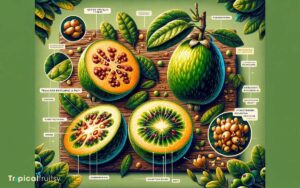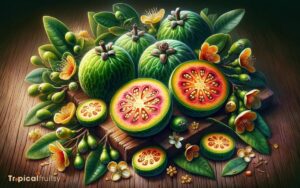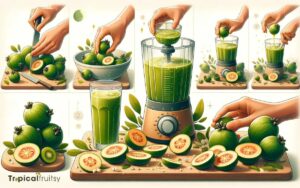How to Grow Feijoa from Seed? 6 Easy Steps!
Growing feijoa (Acca sellowiana) from seed can be a rewarding gardening project, though it requires patience and care.
Here’s a step-by-step guide to help you through the process:
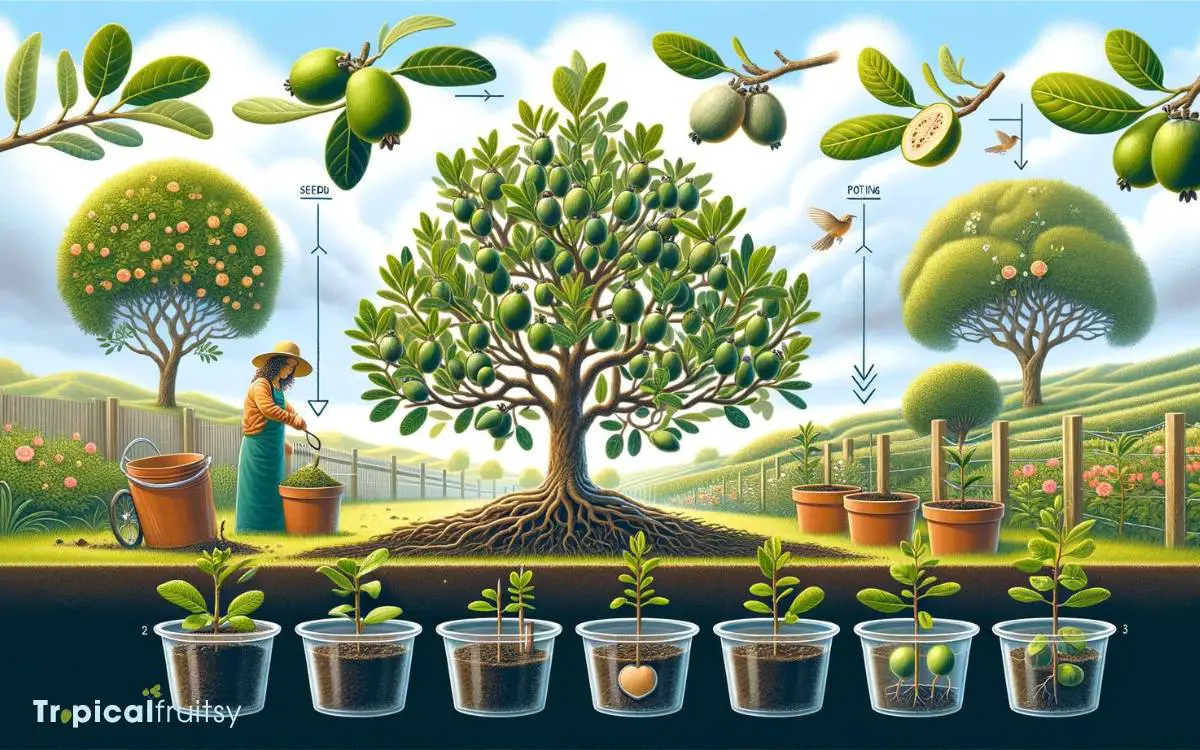
Key Takeaway
Step 1: Selecting Quality Seeds
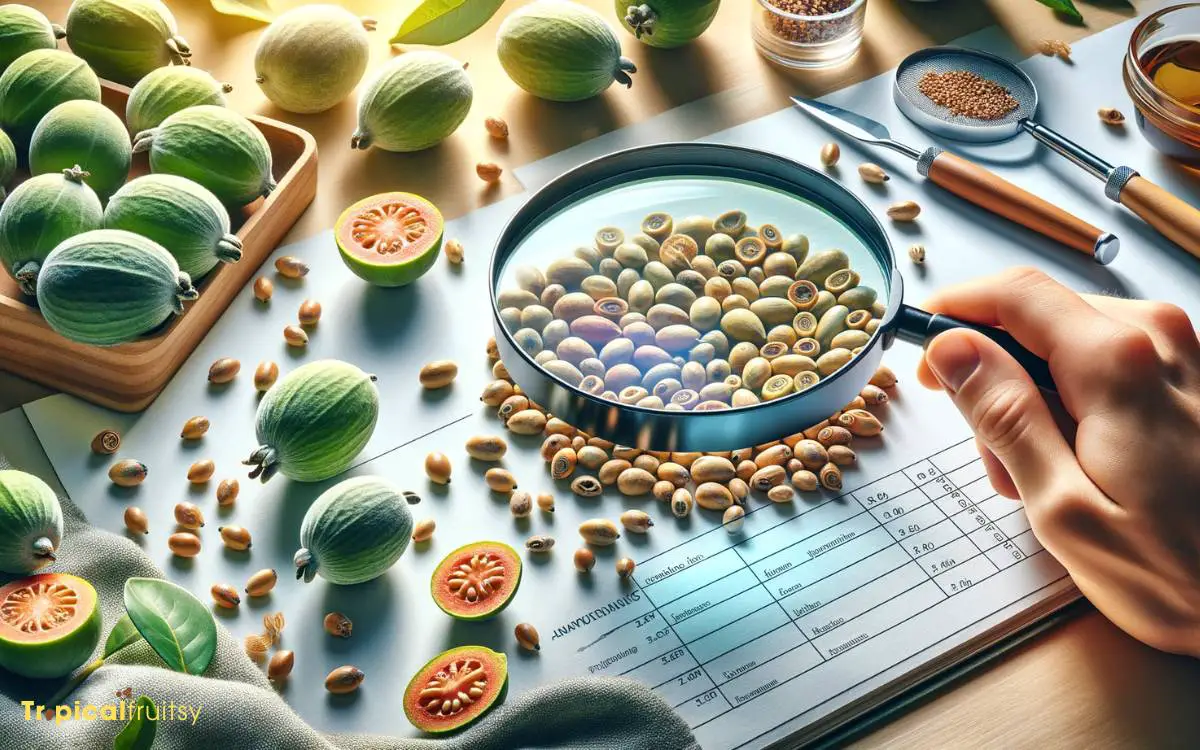
Why should one begin with high-quality seeds when aiming to grow feijoas successfully?
The initial quality of feijoa seeds is paramount as it directly influences germination rates, seedling vigor, and ultimately, the health of the mature plant.
Superior seeds have a higher genetic potential, ensuring that the plants are more resilient to pests, diseases, and environmental stressors.
Scientifically, the phenotypic outcome of the feijoa plants is contingent upon the genotype of the seeds, which in turn reflects the health and quality of the parent plant. Therefore, selecting seeds from robust, high-yielding parent plants is critical.
Additionally, these seeds must be stored under optimal conditions to maintain viability. As one secures the best seeds, it’s crucial to understand the steps for preparing them for sowing, a topic we’ll explore next.
Step 2: Preparing Your Seeds
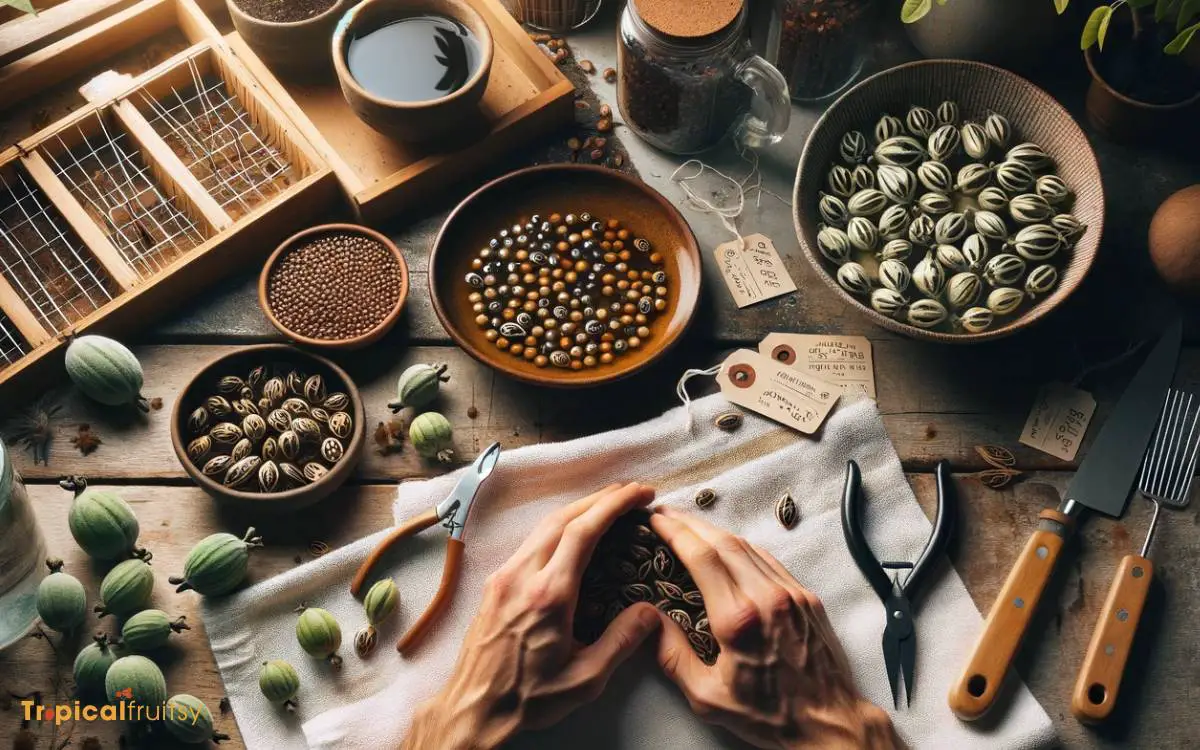
Once feijoa seeds are selected, they require meticulous preparation to enhance germination rates.
The extraction process should ensure seeds remain undamaged, while stratification mimics natural conditions to break seed dormancy.
Precise control of germination conditions, including temperature and humidity, is critical to successful feijoa seedling development.
Seed Extraction
Patience is essential when extracting seeds from ripe feijoa fruit to ensure they’re ready for successful germination.
The initial step involves selecting a fully mature feijoa, which is critical since it directly affects the viability of the seeds. Once the fruit is chosen, it’s carefully cut open to expose the seed-bearing section.
To highlight the steps involved, consider the following table:
| Step | Action |
|---|---|
| 1 | Cut the feijoa in half. |
| 2 | Gently scoop out the pulp. |
| 3 | Rinse the pulp to separate seeds. |
| 4 | Dry seeds on a paper towel. |
These steps are performed under controlled conditions to prevent damage to the delicate seeds. Once extracted, the seeds must be thoroughly cleaned and dried to prevent fungal growth and prepare them for the stratification process.
Stratification Process
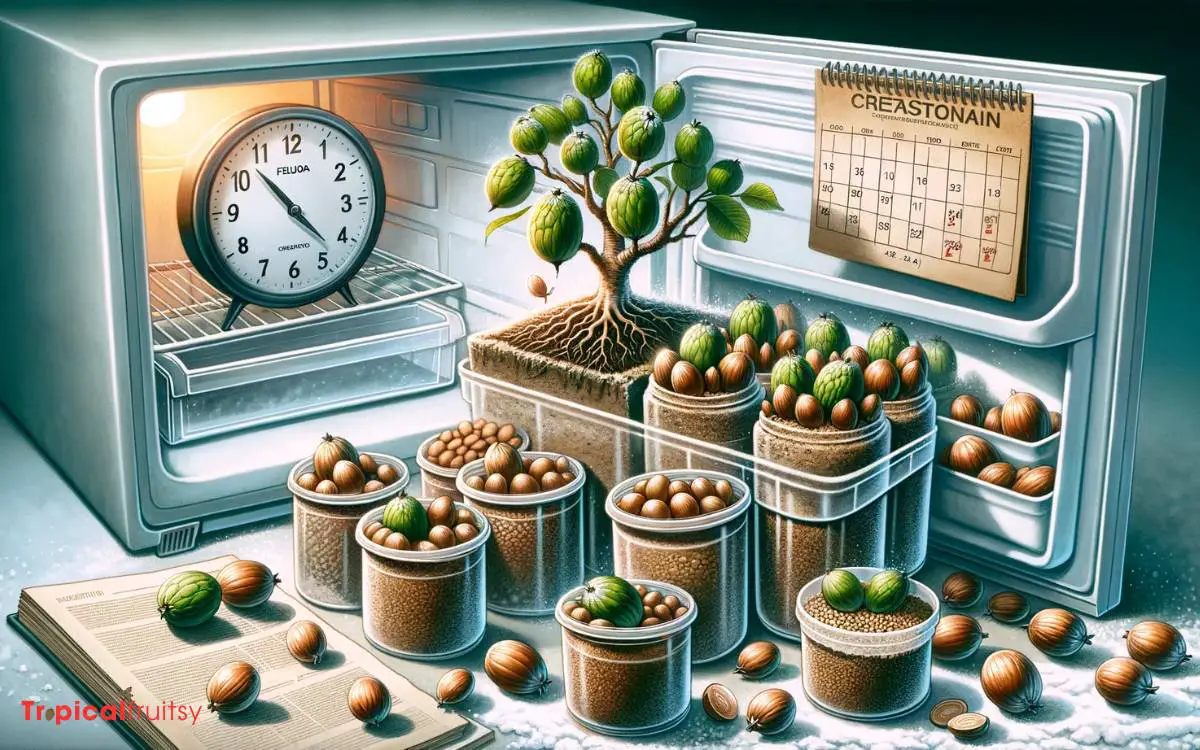
After drying your feijoa seeds, the next crucial step is to stratify them, a process that simulates winter conditions to break their dormancy.
This method involves subjecting the seeds to a period of cold, damp conditions, often ranging from 30 to 60 days.
Strategically, one places the seeds in a moist substrate, such as sand or peat moss, and then refrigerates them at a constant temperature of 2 to 5 degrees Celsius (35 to 41 degrees Fahrenheit).
It’s imperative to ensure the medium remains moist but not waterlogged to prevent seed rot.
This cold treatment reduces endogenous inhibitors and promotes the synthesis of growth hormones, thus preparing the seeds for germination.
After the stratification period, seeds are sown in a warm, well-lit environment, where they’ll begin their growth cycle.
Germination Conditions
Ensure your stratified feijoa seeds are sown in a light, well-draining soil mix at a consistent temperature of around 20 to 25 degrees Celsius (68 to 77 degrees Fahrenheit) to optimize germination.
The microenvironment for the seeds must be meticulously controlled to facilitate the enzymatic processes necessary for sprouting.
Consider these critical factors:
- Soil pH: It should be slightly acidic to neutral (pH 5.5-7).
- Moisture: Maintain evenly moist conditions, but avoid waterlogging.
- Light: Provide diffused light, as direct sunlight can elevate soil temperature excessively.
- Air circulation: Good airflow prevents fungal growth.
- Nutrients: A balanced, low-concentration fertilizer aids initial growth post-germination.
Step 3: Soil and Container Choices
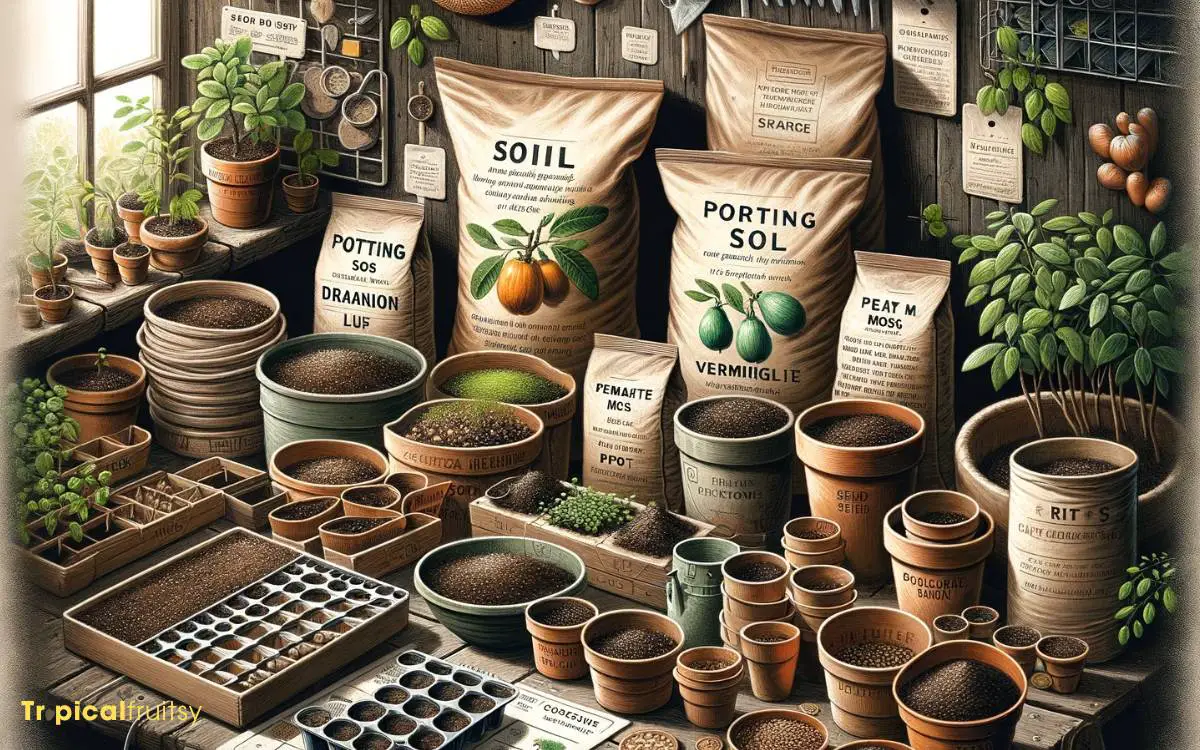
Selecting the proper soil mix is critical for feijoa seed germination. It requires a balance of aeration, moisture retention, and nutrient availability.
The container size directly influences root development. Insufficient space can potentially stunt plant growth.
Adequate drainage is paramount to prevent root rot. This necessitates containers with holes and soil that doesn’t compact easily.
Optimal Soil Mix
Prepare a well-draining soil mix in a suitable container to provide the best foundation for feijoa seedlings. The optimal soil mix should facilitate root aeration, maintain adequate moisture, and support nutrient uptake.
For feijoa, an analytical assessment reveals that the following components are critical:
- A base of loamy soil, rich in organic matter
- Perlite or sand for improved drainage
- Peat moss to retain necessary moisture
- Compost to enrich the soil with nutrients
- A pH balance ranging from 5.5 to 7, slightly acidic to neutral
This combination ensures that the soil environment is conducive to the germination and growth of feijoa seeds. As the seedlings develop, the choice of container size matters.
Container Size Matters
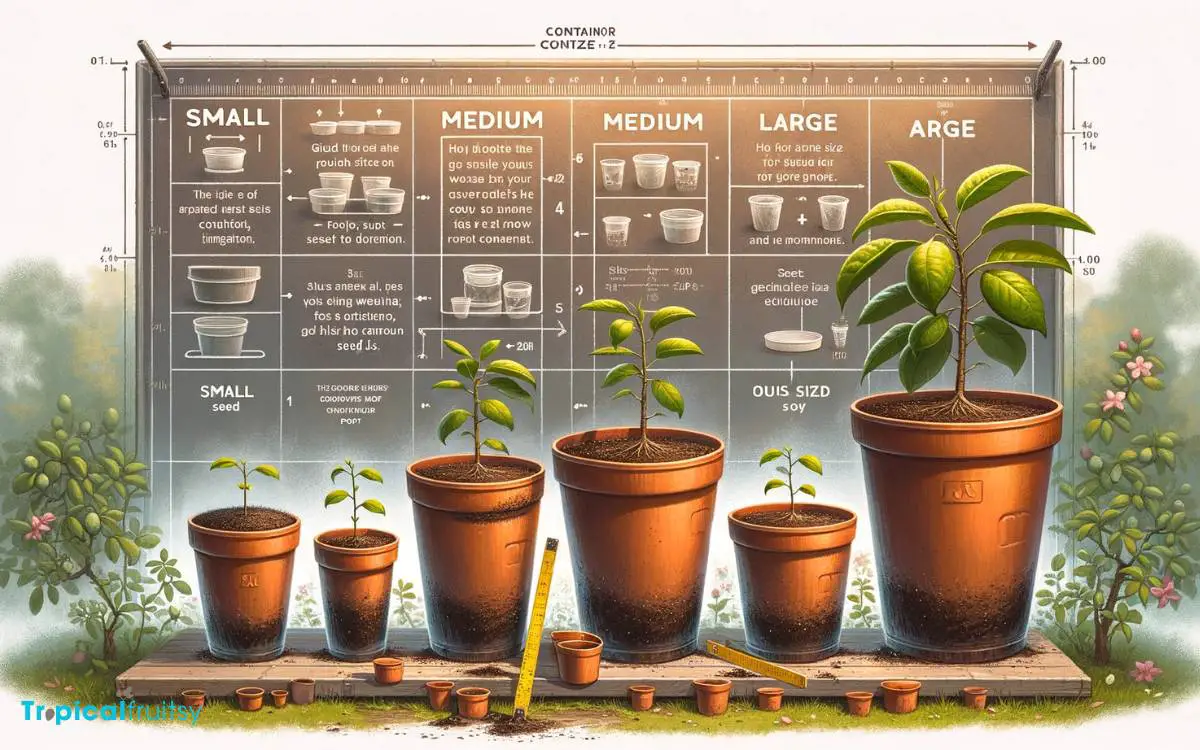
Choosing the right container size is as crucial as the soil mix, with a small pot sufficing for the initial stages of feijoa seedling growth.
A container’s dimensions are pivotal, as they directly influence root development, water retention, and nutrient availability.
Scientifically, a feijoa seedling’s container should allow for adequate space to accommodate rapid root expansion without excessive voids that can lead to waterlogging and nutrient dilution.
The pot size must strike a balance between supporting growth and maintaining a compact environment conducive to root-zone moisture and aeration. Typically, a pot that’s 4-6 inches in diameter is appropriate for the seedling phase.
This well-calculated containment facilitates optimal growth conditions, which seamlessly leads to the importance of ensuring proper drainage—a critical aspect that will be discussed next.
Drainage Essentials
Adequate drainage is essential for feijoa seedlings, as it prevents root rot and fosters a healthy growing environment.
For optimal water management, both the soil mix and container selection must facilitate the evacuation of excess moisture while retaining necessary nutrients and air pockets.
Scientific analysis of growing mediums shows that a loamy, well-aerated soil with organic matter is ideal for feijoa.
Consider these key points for drainage:
- Perlite or vermiculite: Increases aeration and drainage.
- Sand: Improves the soil’s ability to shed water.
- Organic compost: Enhances moisture retention while providing nutrients.
- Raised ridges or beds: Promotes gravity-assisted drainage.
- Drainage holes: Essential in containers to allow water to escape.
Choosing containers with ample drainage holes and using soil that maintains structural integrity when wet are critical for the health of feijoa seedlings.
Step 4: Planting Your Seeds
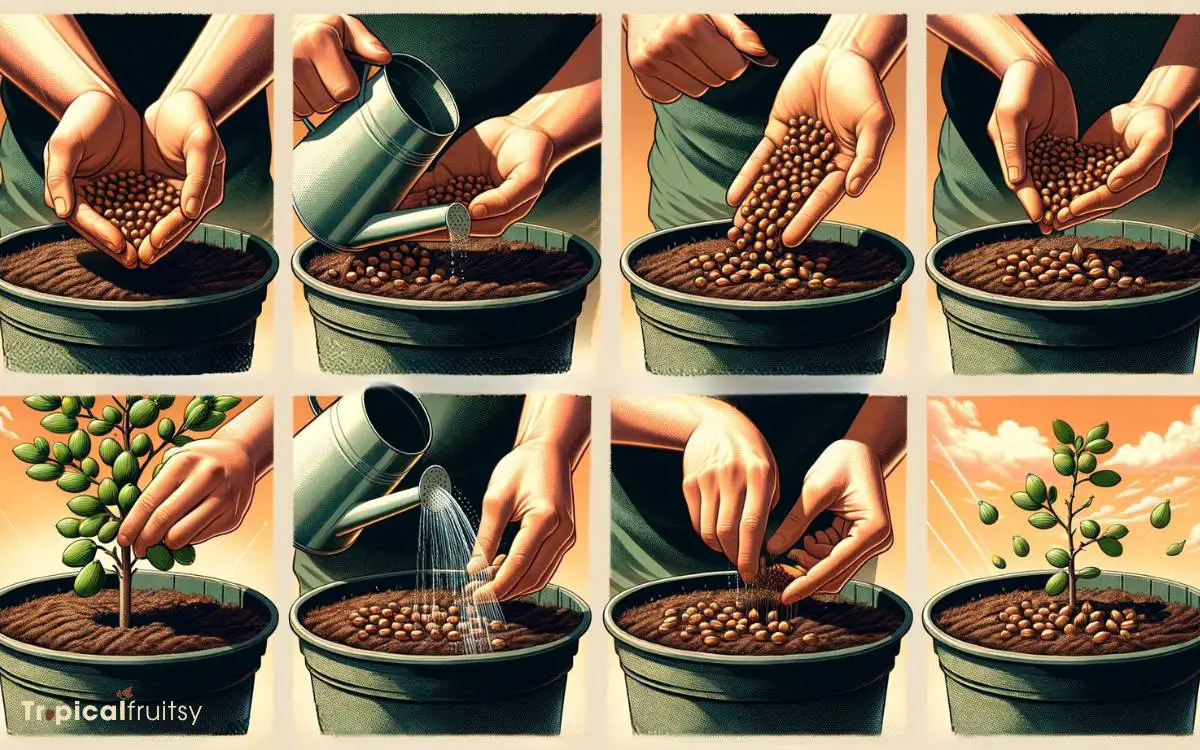
After selecting your feijoa seeds, plant them one-quarter inch deep in moist, well-draining soil.
The depth is critical to ensure proper germination, as it allows for sufficient but not excessive soil coverage, optimizing moisture retention and access to light—both vital factors for seed activation.
Employ a sterile seed-starting mix to prevent pathogen introduction, which could jeopardize seed viability.
The soil temperature should be consistently maintained between 20-25°C (68-77°F), an optimal range that encourages feijoa seed germination.
It’s also essential to lightly press the soil over the seeds to ensure contact while avoiding compaction, which can impede root penetration and growth.
With seeds planted, attention turns to maintaining the delicate balance of moisture, heat, and light required for seedling development, ushering us into the subsequent section on ‘caring for feijoa seedlings’.
Step 5: Caring for Feijoa Seedlings
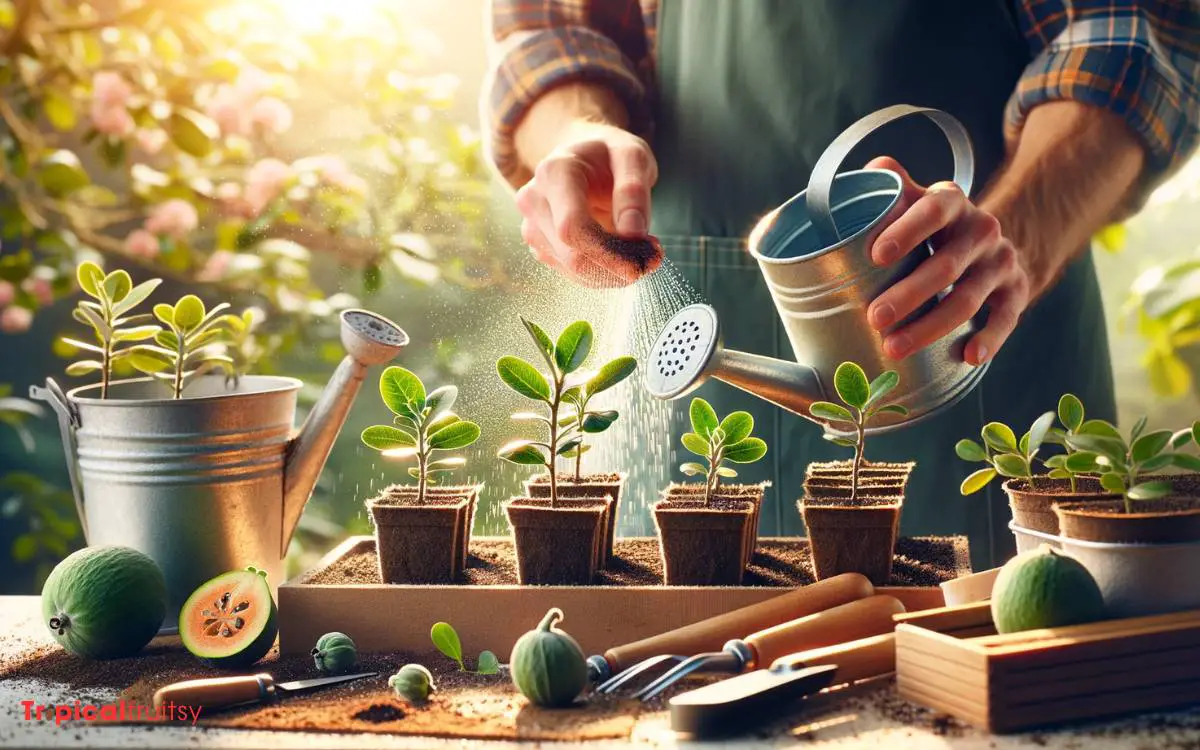
Once your feijoa seedlings sprout, it’s crucial to keep up with consistent watering, ensuring the soil stays moist but not waterlogged.
Seedlings require a delicate balance of moisture and aeration for optimal root and foliage development. Overwatering can lead to root rot, a condition fostered by fungal pathogens in anaerobic soil conditions.
Conversely, under-watered seedlings may experience dehydration stress, impairing their growth and vitality.
Careful monitoring involves:
- Assessing soil moisture before watering
- Providing adequate drainage
- Adjusting watering frequency based on environmental factors
- Utilizing room-temperature water to avoid thermal shock
- Observing leaf health for signs of distress
These practices are fundamental for the establishment of vigorous feijoa seedlings. Such attentiveness paves the way for the next pivotal stage: transplanting and maintenance.
Step 6: Transplanting and Maintenance
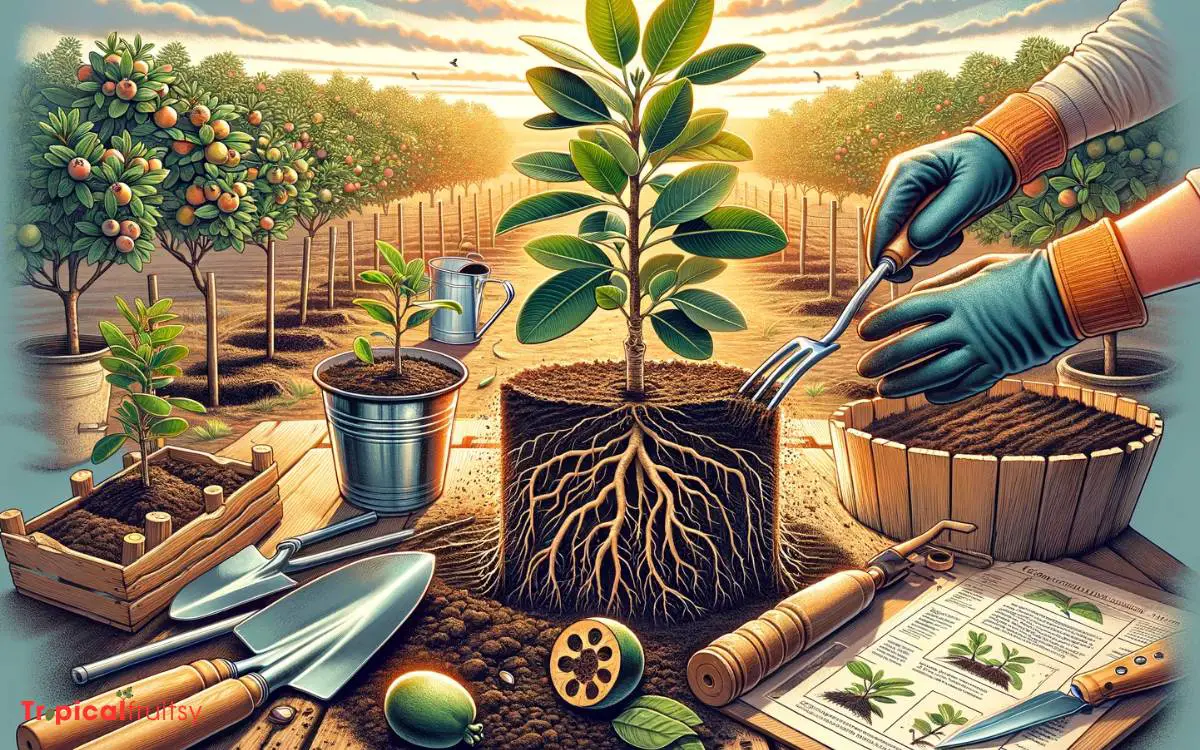
Upon reaching a robust size, feijoa seedlings are ready for transplanting to individual pots or a prepared garden bed, marking the beginning of their maintenance phase. This critical juncture requires meticulous care to ensure acclimatization and continued growth.
Gardeners must consider soil composition—ideally rich in organic matter and well-draining—to facilitate root expansion and nutrient uptake. A pH range of 5.5 to 7 is optimal for feijoa plants, necessitating regular soil testing and possible amendments.
Post-transplant, consistent watering is imperative, avoiding both over-saturation and drought stress. Mulching aids in moisture retention and temperature regulation.
As feijoas establish, pruning encourages a strong framework. This entails removing crossing branches and shaping the canopy to optimize sunlight penetration, critical for fruit set and quality.
Regular observation for pests and disease forms an essential component of ongoing maintenance.
Conclusion
While nurturing feijoa from the capricious whims of seed may resemble an exercise in patience worthy of a Zen master, the meticulous gardener who selects the aristocracy of seeds, coddles them in premium soil, and fusses over their every photosynthetic need, may one day, under the amused gaze of Mother Nature, reap the luscious emerald bounty.
Truly, the alchemy of transforming a tiny seed into a feijoa tree is the gardener’s magnum opus.

